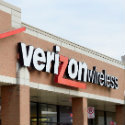
If the industry goes by AT&T's definition of 5G, Verizon is already offering 5G service on a grand scale.
"We have it in 1,500 markets and I believe they [AT&T] are at 400, so I think we have it in a lot bigger footprint," Mike Haberman, VP of Verizon's network engineering, told Light Reading. "But we call it 4G. When you look at third-party studies, you’ll see that the Verizon 4G network is already faster than their 5G network."
Haberman is referring to AT&T's recent decision to replace the "LTE" icon on a good chunk of its Android phones with a "5G E" logo, an action that AT&T is rolling out to some of its customers now. The operator's move has generated some strong criticism in the industry, mainly from competitors Verizon and Sprint. (See Verizon, AT&T Spar Over 5G Service Names, Marketing.)
AT&T laid the groundwork for its action back in 2017 when it announced it would apply the "5G Evolution" branding label to markets where it offers LTE Advanced technologies like 4x4 MIMO and 256 QAM. AT&T said that it currently offers 5G Evolution in over 400 markets, and will take the technology "nationwide" in the first half of this year to cover over 200 million people (there are 328 million people in the United States, so AT&T is likely referencing coverage in major urban areas).
Verizon, for its part, said that its 4G LTE Advanced technologies -- including carrier aggregation, 4x4 MIMO and 256 QAM -- are currently available in over 1,500 markets today.
"We have a massive deployment of that technology and our customers are benefiting from it," Verizon's Haberman said, pointing to a new survey from J.D. Power that gave top marks to Verizon. "I think this [survey] is a good barometer about who is deploying technology and how they’re doing it scale-wise."
Haberman added that Verizon continues to work to selectively improve markets that are seeing increased usage through the deployment of additional technologies like LAA, by refarming its 850MHz spectrum for LTE, or by deploying LTE into new bands like AWS-3 -- or by doing all three. "Verizon is in a great position in terms of capacity," he said.
Defining markets and deployments
If AT&T offers LTE Advanced technologies in 400 markets, and Verizon offers them in 1,500 markets, which company offers LTE Advanced (or "5G E," in AT&T's parlance) to more people?
AT&T defines a "market" as an FCC Cellular Market Area (CMA). There are around 730 CMAs in the United States, mainly configured around major metro areas.
Verizon defines a "market" as a "census urban area." However, based on the 2010 U.S. Census, there are only a total of 486 "urban areas" nationwide -- making Verizon's 1,500 figure confusing. When questioned further about the situation, Verizon did not provide more details on its definition of a "market" but instead explained that it covers a total of 234.1 million people with its 4G LTE Advanced technologies across 1,500 markets in the country.
"The carriers can define that [coverage markets] however they want," Haberman said. "There’s no standard out there that people use."
Figure 1: 
The bottom line though is that, despite the big difference between Verizon's 1,500 markets and AT&T's 400, both operators are roughly aligned in their deployment of LTE Advanced technologies. Verizon currently covers 234.1 million people with the technologies and AT&T said it would cover around 200 million people by the first half of 2019.
Verizon and AT&T aren't alone in deploying various LTE Advanced technologies. T-Mobile, Sprint and other regional wireless network operators are also deploying various LTE Advanced technologies, ranging from carrier aggregation technology in increasingly complex configurations to ever-higher orders of MIMO.
Next Page: The timing for real mobile 5G is still a mystery
Looking toward the winner's circle
The current LTE network-upgrade horserace is a marketing-fueled undercard. Such LTE Advanced upgrades generally occur on a cell tower-by-cell tower basis, often starting in the nation's most populous markets or other high-profile locations (think Aspen, Colo., or the Hollywood Hills) and expanding out from there. Moreover, carriers are deploying LTE Advanced technologies in different configurations, making direct comparisons difficult -- and those configurations can change based on the spectrum a carrier has in a particular market. For example, an operator might deploy two-channel carrier aggregation in one market and three-channel carrier aggregation in a different market.
Thus, it's likely fair to say that both Verizon and AT&T currently offer their respective LTE Advanced technologies across a wide swath of the most densely populated and wealthy locations in the United States.
The network-speeds horserace -- highlighted by J.D. Power's hat-tip to Verizon -- is also a mixture of marketing endurance and chance. Network speeds can vary greatly depending on the technologies in a user's phone, in a carrier's network, and a users' distance from a cell tower, as well as the presence of buildings, trees, and other geographic obstacles. That's why just about every major wireless network operator claims to have the nation's biggest, fastest or most reliable network -- and why each can find research supporting their claim. (For example, on the same day that J.D. Power proclaimed Verizon as the best carrier, YouGov reported that T-Mobile's customers are the most satisfied.)
And, at least right now, the 5G marketing horserace is heading into the straightaway. AT&T is using the "5G E" label for its LTE Advanced markets and the "5G+" label for transmissions in its millimeter-wave spectrum, which it has deployed using the 5G NR transmission standard in parts of a dozen markets, albeit only to "select" customers. Verizon, meantime, is using the phrase "5G Ultra Wideband" on its marketing material, at least in the four markets where it has launched fixed wireless services using its own proprietary 5GTF transmission standard. Neither Sprint nor T-Mobile have disclosed how they will brand 5G, but their launches are likely to include marketing phrases like "plus," "max" or "X."
And although all these operators are now working toward the same 3GPP 5G NR standard, their actual 5G networks could vary drastically depending on how much spectrum they allocate to their 5G deployments and what spectrum bands they use. For example, transmissions in 600MHz can often travel miles and through buildings, but can't carry as much data as transmissions in millimeter-wave spectrum bands, which can only travel a few thousand feet and generally can't penetrate buildings.
Mobile 5G from Verizon?
Although Verizon's Haberman discussed Verizon's LTE Advanced network at length, he declined to provide much insight into Verizon's mobile 5G launch plans. Verizon executives for months have promised that the operator's mobile 5G launch would occur several months after the launch of its 5G Home fixed wireless service. Indeed, the stage appeared set for Verizon to detail its mobile 5G launch plans during the operator's high-profile keynote at the recent CES trade show in Las Vegas. Instead, the operator's CEO discussed the types of enterprise applications 5G would enable. (See Verizon's 5G CES Keynote: T-Shirts, But No Beef.)
"We are working extremely hard at having a meaningful deployment [of mobile 5G] this year," Haberman said. “That’s what we really want."
However, he didn't provide any specifics involving the spectrum, launch date or pricing for that mobile service.
— Mike Dano, Editorial Director, 5G & Mobile Strategies, Light Reading | @mikeddano
About the Author(s)
You May Also Like












